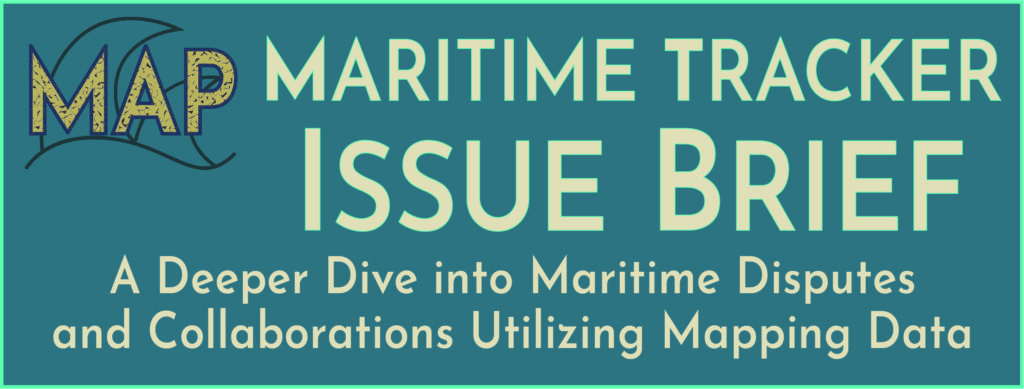Original Photo Source: USN (Edited by ICAS)


Research Associate & Program Officer
Maritime Asia encompasses two distinct sea areas – the East China Sea and the South China Sea. These seas have been characterized by long-standing territorial and maritime disputes that have largely remained unsettled for decades. Reasons for these tensions vary. They range from seeking to extract economic resources, such as fisheries and fossil fuels to maintaining a strong surveillance foothold over important trade and navigational pathways to securing and defending the integrity of one’s territorial claims. According to Gordon Houlden, Director of the China Institute of the University of Alberta, and Nong Hong, Executive Director of the Institute for China-America Studies (ICAS):
The status quo in the East Asia maritime domain is attributed to, in addition to geopolitical factors and competition for resources, the interpretive ambiguities embedded in [United Nations Convention on the Law of the Sea (UNCLOS)] provisions about the rights and obligation of user states and coastal states respectively, and about competing claims over national jurisdiction among coastal states based on UNCLOS.
The Arctic Region too has witnessed increasing attention from within and outside the region, as waterways once inaccessible have become navigable during the summer months and accessible to resource exploitation.
As one of the foremost bridges between U.S. and Chinese institutions and scholars, particularly in the area of strategic studies, ICAS is well-situated to provide objective analysis and create learning tools for the public to better understand important maritime policy-related issues that concern the China-U.S. relationship as well as China’s ties with its Asian neighbors and the U.S.’s ties with Maritime Asia. In this regard, ICAS has produced its first of several upcoming maritime trackers, the South China Sea Maritime Tracker, for the sake of furthering this goal. The purpose of the Tracker is to provide an interactive and easy-to-understand visual reference of the multiple sovereignty and sovereign rights and jurisdiction-related disputes in the South China Sea, and thereby advance an objective and user-friendly appreciation of the complex dynamics at play. As such, the Tracker includes features such as a visual display of settled and disputed boundaries, territorial occupancies, internationally submitted sovereign rights and jurisdiction claims, areas of functional cooperation, and more. This commentary outlines in brief the research and development methodology, as well as the focus of study, that ICAS scholars utilized to produce its first maritime tracker.
ICAS datasets on maritime boundaries, claims, and events are gathered from a variety of sources, including government publications, stakeholder submissions to the United Nations, and international media. For some events, such as the U.S.’ Freedom of Navigation Operations (FONOPs), locations must be approximated, as the exact locations are often not publicly available. In these situations, the maritime tracker team at ICAS relies on international multimedia reporting to verify approximate locations. ICAS ensures that it provides the source for each dataset utilized in order to enhance the transparency of this learning tool.
Although not every event makes the headlines in international media, the events taking place must be kept track of in order to better understand the complex relationships between stakeholders in the region. Clearly defined naming conventions and criteria must be laid out in order to create a clean and useful dataset. Although some specific criteria may differ between each unique tracker, ICAS has set general guidelines to follow when recording data for each event:
To convert datasets into useful and informative images and layers on an interactive map, ICAS is making use of a mapping and analytics platform called ArcGIS. This software utilizes a geographic information system (GIS), which is a framework used to analyze spatial location and organize multiple layers of visualizations on maps. GIS allows one to visualize and manipulate data in new ways to gain deeper insights in patterns and relationships that otherwise would have remained invisible. ArcGIS has an online, cloud-based platform called ArcGIS Online, which allows ICAS to update each tracker on a rolling basis. As these trackers involve highly nuanced and contain interconnected issues, the ICAS maritime tracker team welcomes comment and feedback.
The South China Sea is one of the most hotly contested maritime regions in the world today. Six parties, China, Brunei, Malaysia, the Philippines, Taiwan, and Vietnam all have overlapping territorial and maritime claims in the region, with each claimant citing historical records, international treaties or differing interpretations of UNCLOS to substantiate or legitimize their claim. These disputes have led their navies, coastguards, and fishing fleets to becoming frequently embroiled in maritime claims-related encounters.
Non-claimant States also have an increasing economic, political, and strategic stake in the region, including ASEAN, the European Union, the United States, Australia, Japan, India, and South Korea. The South China Sea is one of the world’s most critical sea lines for shipping and global trade. The United States in particular is an active non-claimant State in the South China Sea through its Freedom of Navigation Operations. Non-claimant stakeholders have a common interest in mitigating geopolitical crises and maintaining navigational freedoms, including right of passage, in order to allow for trade to thrive in the region.
South China Sea claimants have worked together in the past, bilaterally and within larger groups, in attempts to resolve some of these disputes peacefully. Notwithstanding these efforts, each of the sovereignty disputes and a majority of the maritime rights-related disputes remain unresolved at this point of time. It is in this context that this Tracker, as part of the Institute for China-America Studies’ commitment to knowledge dissemination and mutual understanding, is intended as a handy tool for the public to better understand these disputes and stay on top of the latest developments in the South China Sea.
The South China Sea has periods of hot and cold activity. Although it is rare that any one event occurring elsewhere in the world would be the sole cause of an event occurring in the South China Sea, many of these incidents likely do not happen in a vacuum. However, one should be wary of jumping to conclusions of a definite cause and effect relationship between the timing of a South China Sea event, such as a FONOP, with another event in the world, such as developments in the current U.S.-China trade negotiations.
This first tracker focuses on several key areas:
Often times, maps depicting claims in the South China Sea are displayed in one of two ways: what the claims should look like, or what the claims actually look like. It is important to differentiate between the two, because what the claims should look like may not accurately reflect a stakeholder’s United Nations-submitted claim or furnish an objective basis to assess the underlying claimants’ rights and obligations. For instance, although the many claims submitted to UNCLOS from various South China Sea stakeholders indicate overlapping claims, at the level of domestic law, the claims are drawn far more extensively and differ markedly from their internationally submitted companion claim. Therefore, ICAS decided it would give precedence to the internationally submitted claims as well as the major territorial occupancies – given that they go to the heart of the charged sovereignty issue and are central to each bilateral or multilateral dispute.
The South China Sea Maritime Tracker is the first of a handful of upcoming maritime trackers that will be produced by the Institute for China-America Studies to track major events in Maritime Asia and beyond. These maps are intended to be updated on a rolling basis in order to stay relevant and informative. As one of the primary intentions of these trackers is to encourage discussion and analysis of complex maritime security issues that impact the U.S.-China relationship, ICAS welcomes constructive submissions, questions or comments.

The Institute for China-America Studies is an independent nonprofit, nonpartisan research organization dedicated to strengthening the understanding of U.S.-China relations through expert analysis and practical policy solutions.
1919 M St. NW Suite 310,
Washington, DC 20036
icas@chinaus-icas.org
(202) 968-0595
© 2025 INSTITUTE FOR CHINA-AMERICA STUDIES. ALL RIGHTS RESERVED.
Beijing’s approach to South China Sea tensions: reduce now, resolve later